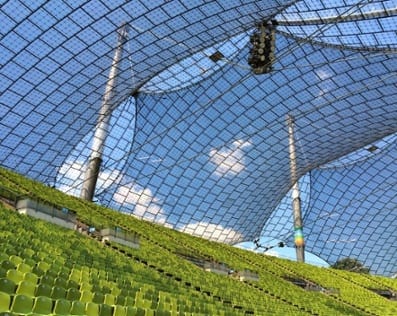The Summer Olympics in Rio just ended, and much like how it is in any Olympic year, the sports media world is currently hyper-analyzing NBC’s coverage of the Games, as well as the network’s performance from a television ratings perspective. NBC bought the rights to the Olympic Games back in 2011 for a then-staggering $4.38 billion (which, given the sports media rights bubble we are witnessing currently, would be a much higher number if purchased today). As such, there is understandably a great deal of scrutiny around NBC’s audience metrics, especially given the sheer amount of money that is spent in trying to attain viewership to the network during the two-week television window that the Games occupy.
Now, without going too far into detail, NBC’s television numbers weren’t so hot this year. In fact, they were downright terrible. NBC hit historic lows in nearly all of its key television metrics for the Rio Olympics, including the closing ceremony, which now carries the dubious distinction of being the lowest-rated closing ceremony in the 120-year history of the Summer Olympic Games.
Curiously, however, the final social media numbers reported by NBC from the Games painted a much different and much less bleak picture. The Rio Olympic Games were far and away the most talked about and consumed edition of the Games in the history of social media, shattering records held by previous iterations of the Games, even when one adjusts for user-base size. The social media bonanza was driven almost entirely by millennials, who disproportionately contributed to the vast increases in consumption of the Games on platforms like Snapchat, Twitter, Facebook and more, compared to their older generational brethren.
Clearly, the world is changing rapidly, and as the digital generation grows into adulthood, their new-school methods of consuming media are growing in lockstep. Many in the sports world point to declining TV ratings as evidence that millennials don’t care about sports, but the Rio Olympics should provide all the evidence necessary to prove that this couldn’t be further from the truth. Instead, the smashing success of the Rio Olympics on social shows that brands that utilize the sports space in their marketing mix need to be smarter about how they communicate with millennials.
 Source: pexels.com used under CC license.
Source: pexels.com used under CC license.
What can brands learn from this?
The most important lesson any brand can learn about millennials is that they are experiential. Millennials would vastly prefer to be a part of an event as opposed to watch the same event, and social media helps bridge this gap in ways that were never thought possible. Platforms like Periscope and Facebook Live now allow people from all over the world to get a live spectator’s view of any event as it happens. Individuals attending major sporting events can share their favorite moments on Snapchat and Instagram with their friends back home in seconds. For the millennial user who grew up in a digital world, engaging with live sports in this manner just fits their lifestyle in a much more organic way.
This is where brands, whether they are in tech, healthcare, consumer, or any other vertical really, must adapt. The world is changing, the way we consume media is changing, and brands must change what media channels they utilize in their sports marketing mix. The southeastern United States (home of PAN’s Orlando office!) is a hub for these kinds of next-wave experientially-oriented, social-driven sporting events, as sports properties like SEC Football (headquartered in Birmingham, AL), NASCAR (headquartered in Daytona Beach, FL), EA Sports (headquartered in Orlando) and Orlando City Soccer Club have all made great strides with millennials using an experiential social strategy (such as the immensely successful cross-platform #OrlandoUnited campaign, which you can learn more about here). All four have a major presence in the southeast.
Here’s three short tips for how to adapt to the new paradigm:
1. Shift media buying strategy away from television, and balance it towards social
![]()
- Television is certainly never going away, but millennial-minded brands who want to activate in the sports space would be better served by shifting dollars towards experiential social media and new media, and away from old media platforms like television and radio.
2. Leverage experiential social platforms
- Platforms like Periscope, Facebook Live and Snapchat represent the future of millennial brand engagement. For any brand interested in using large events (like sports or music) to communicate their brand message, using an experiential platform is the most engaging way to connect with millennials.
3. Look to millennial-heavy cities in the southeast for grassroots campaigns
- Experiential-focused social media obviously does best in cities with a high concentration of millennials, so brands looking to leverage sports should focus on these cities to build grassroots campaigns that have the power to build brand-affinity for life. Millennials are moving to the south in droves, to cities like Orlando, Charlotte and Austin, because of high-growth economies and better weather. As such, it should come as no surprise that sports organizations in the region like the Orlando City Soccer Club have had immense success in engaging with millennials. Capitalizing on this trend and leveraging the forward-thinking minds of the region could be the difference for your brand.


